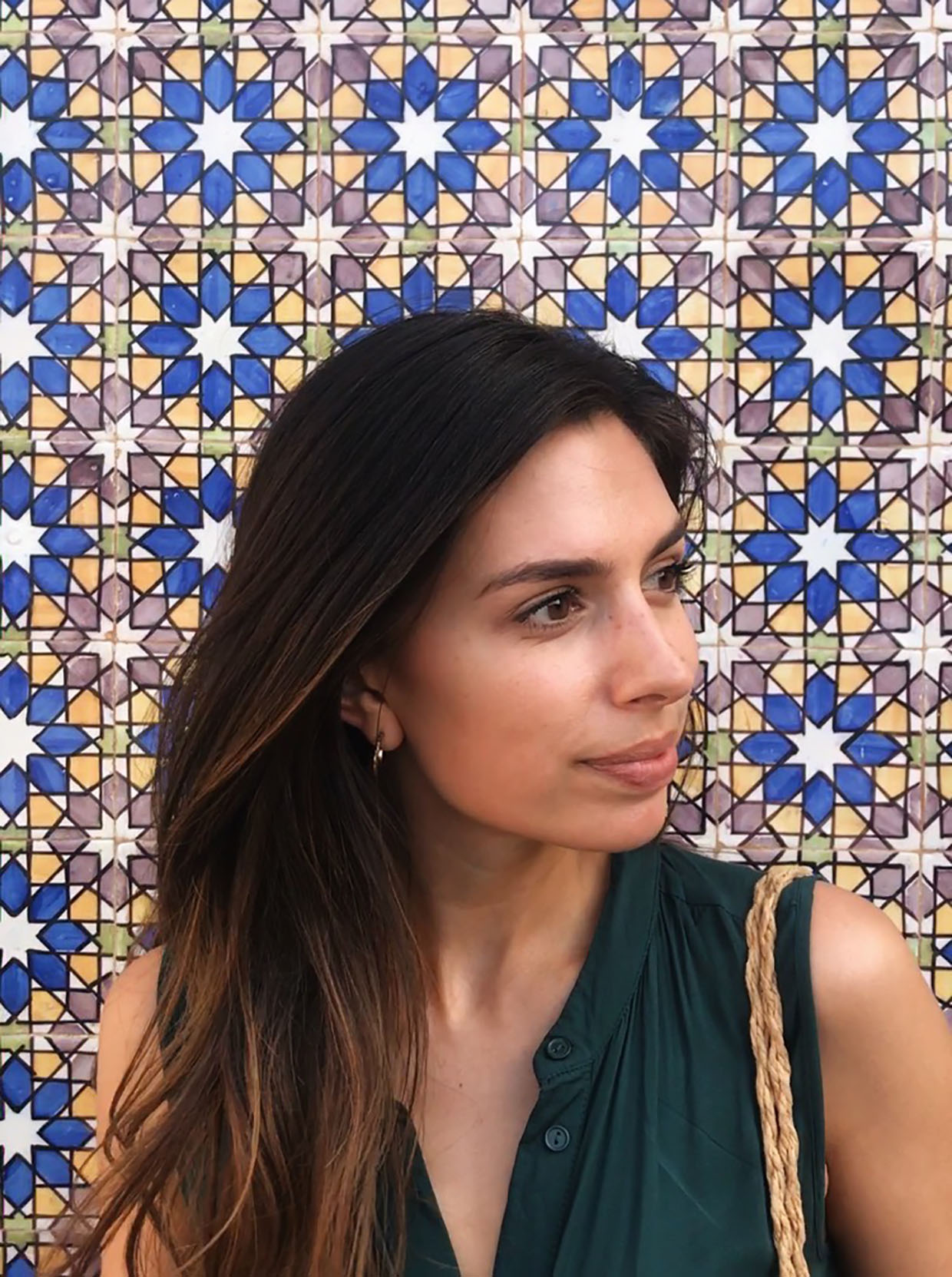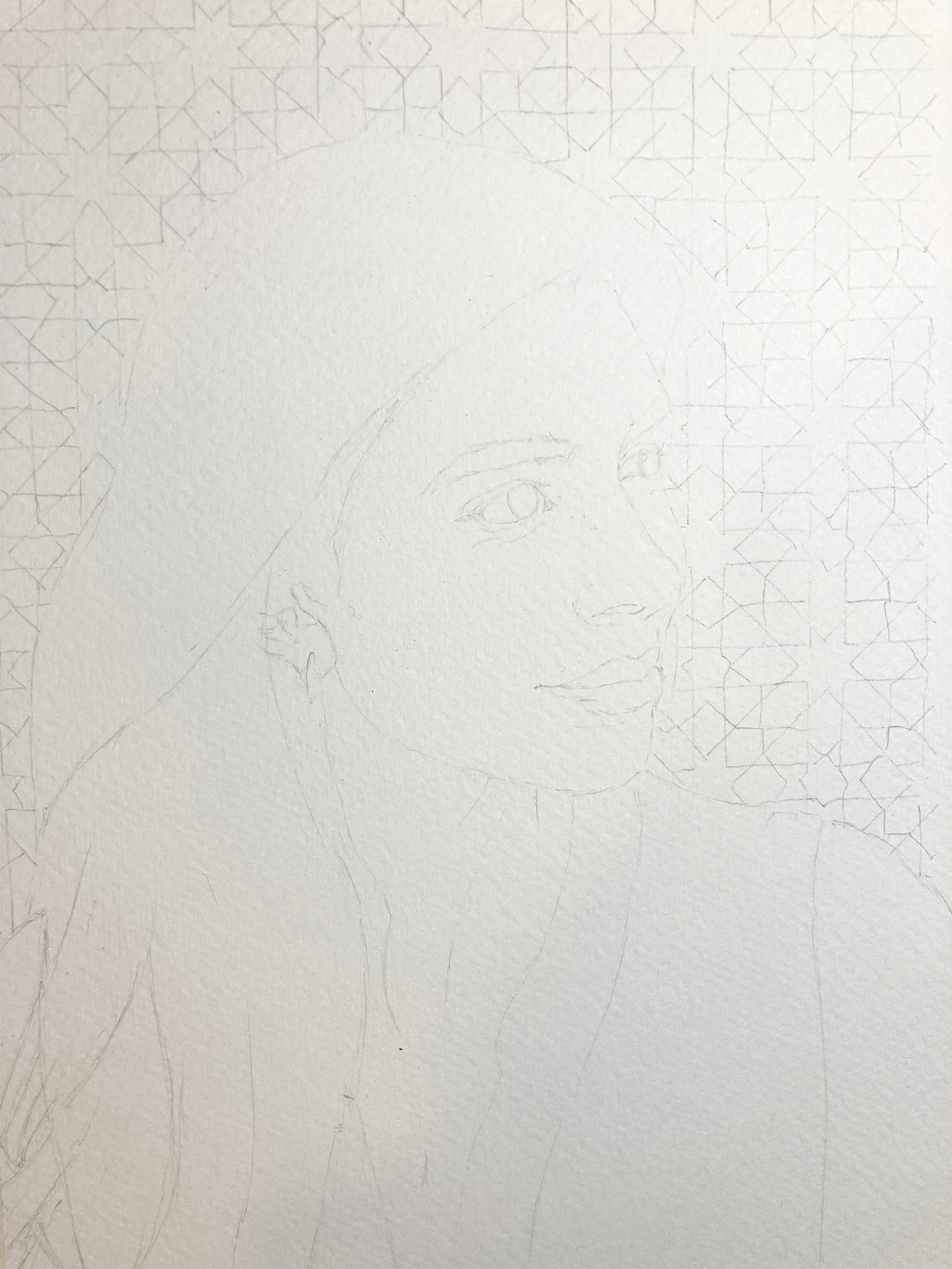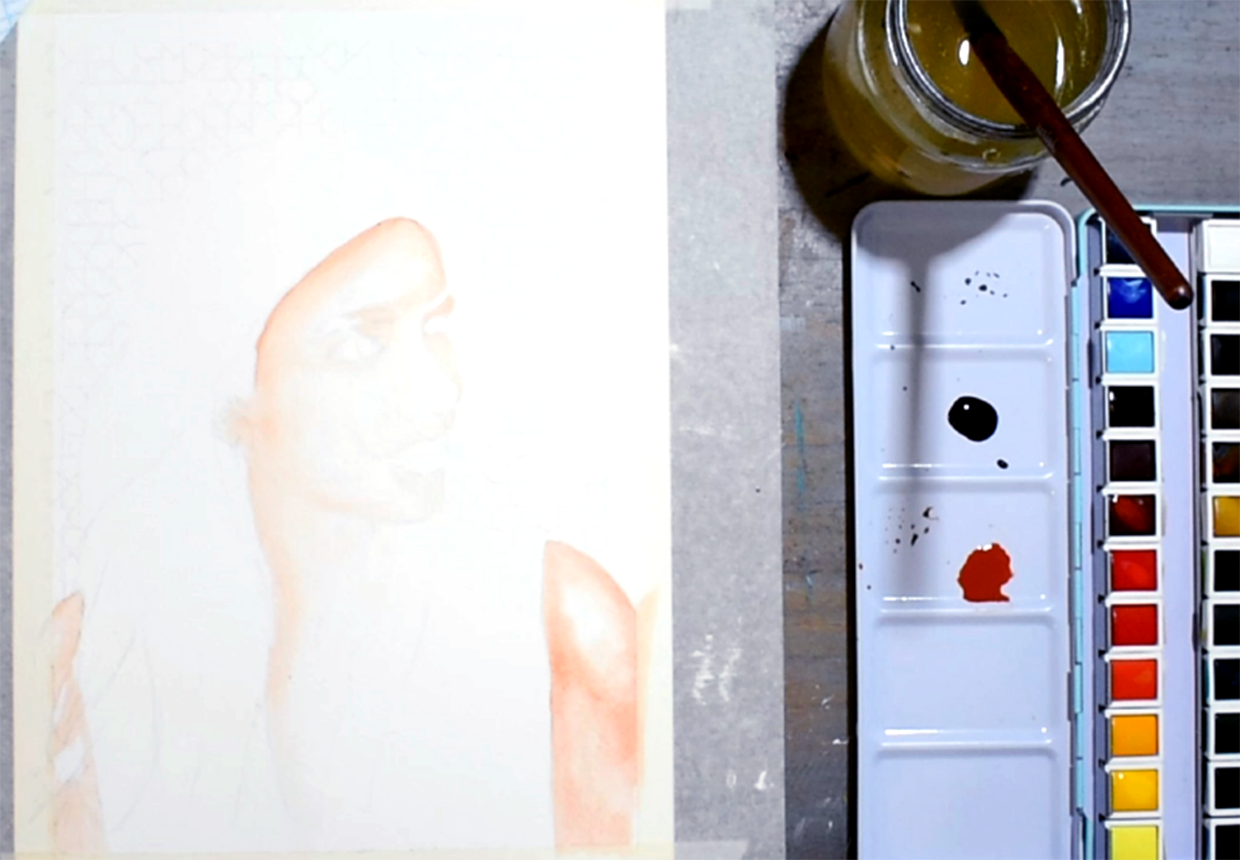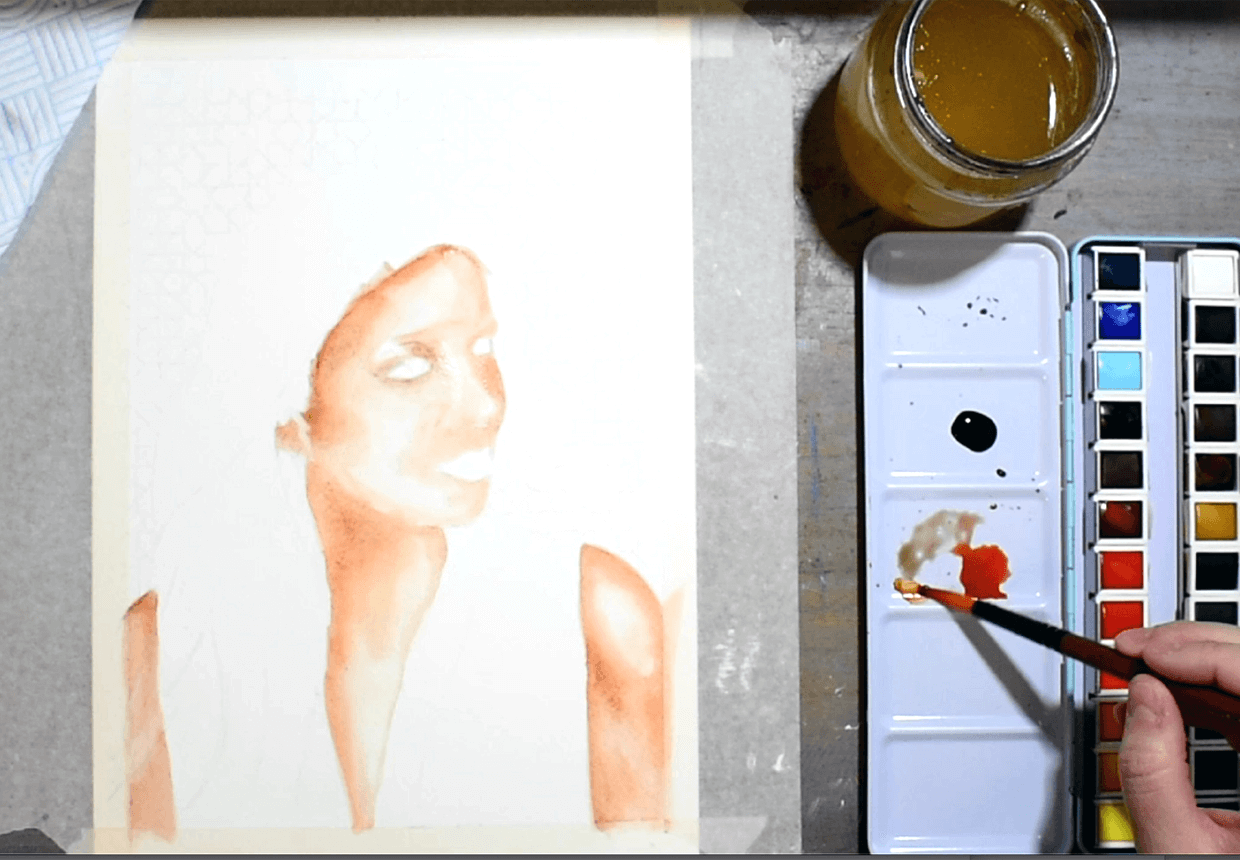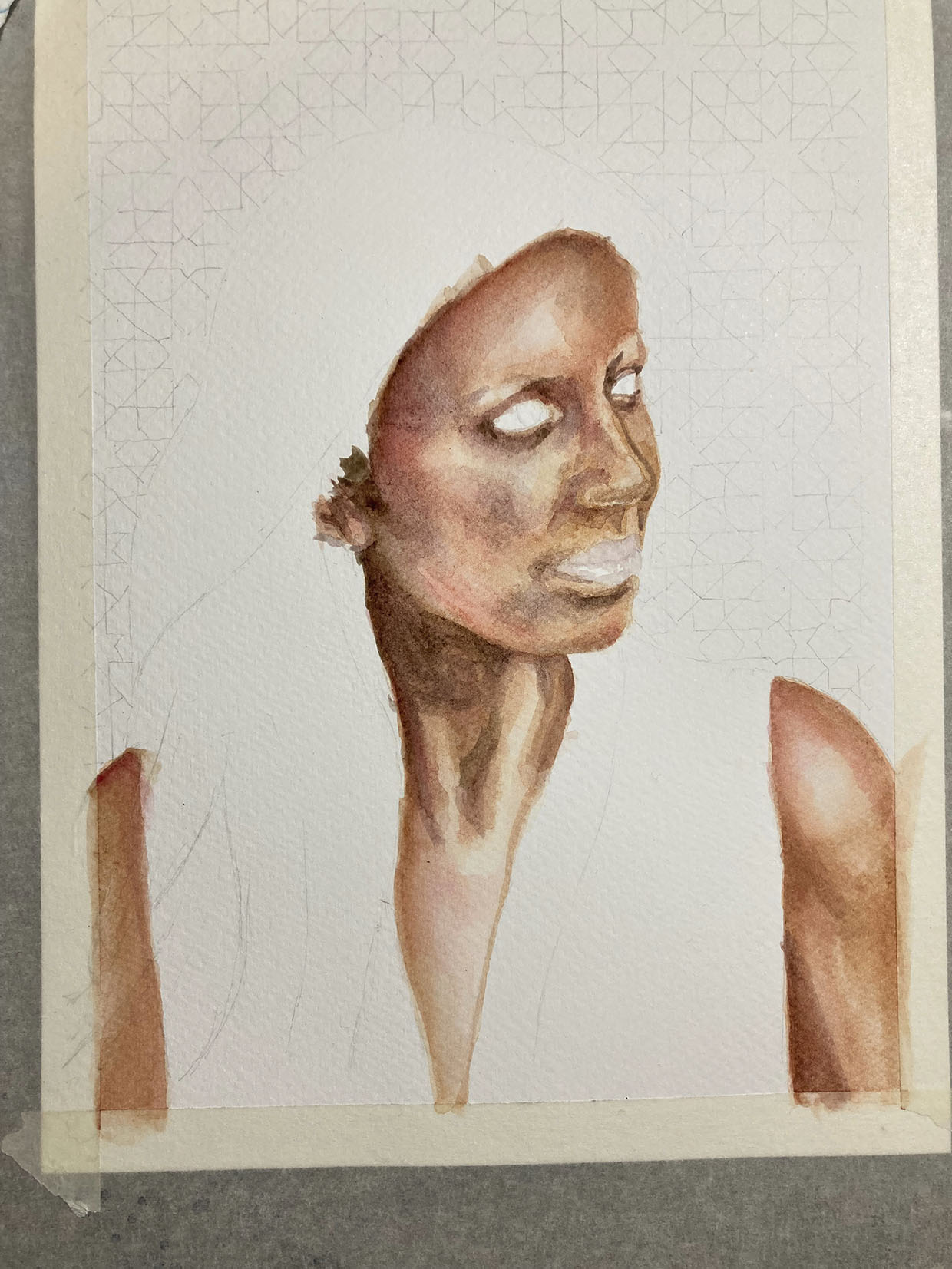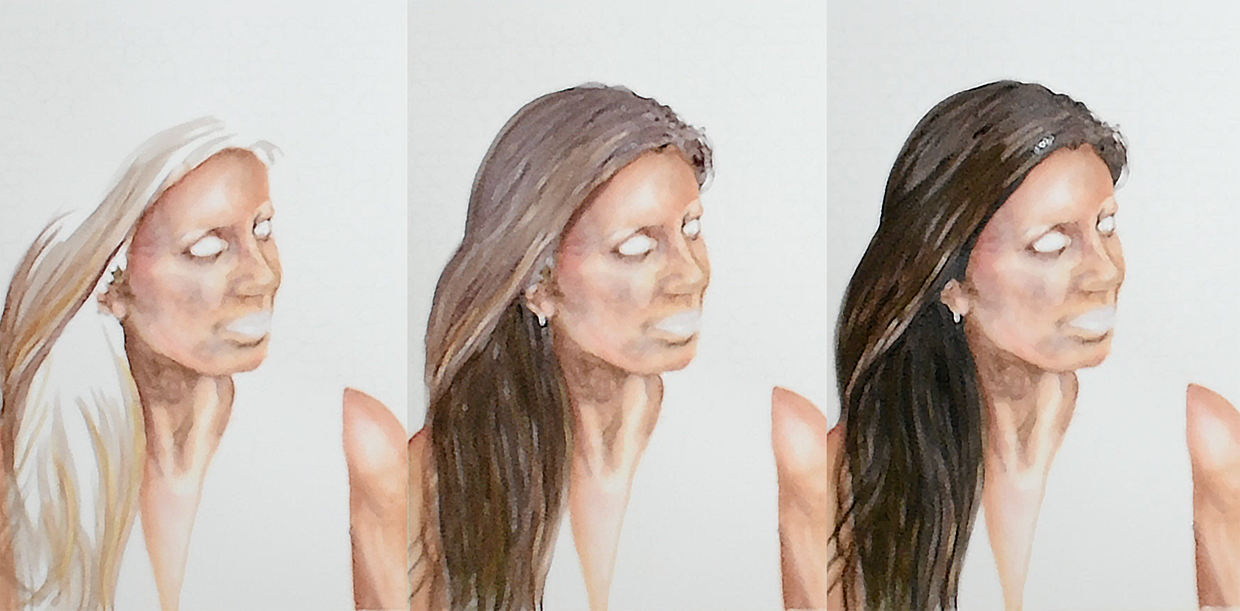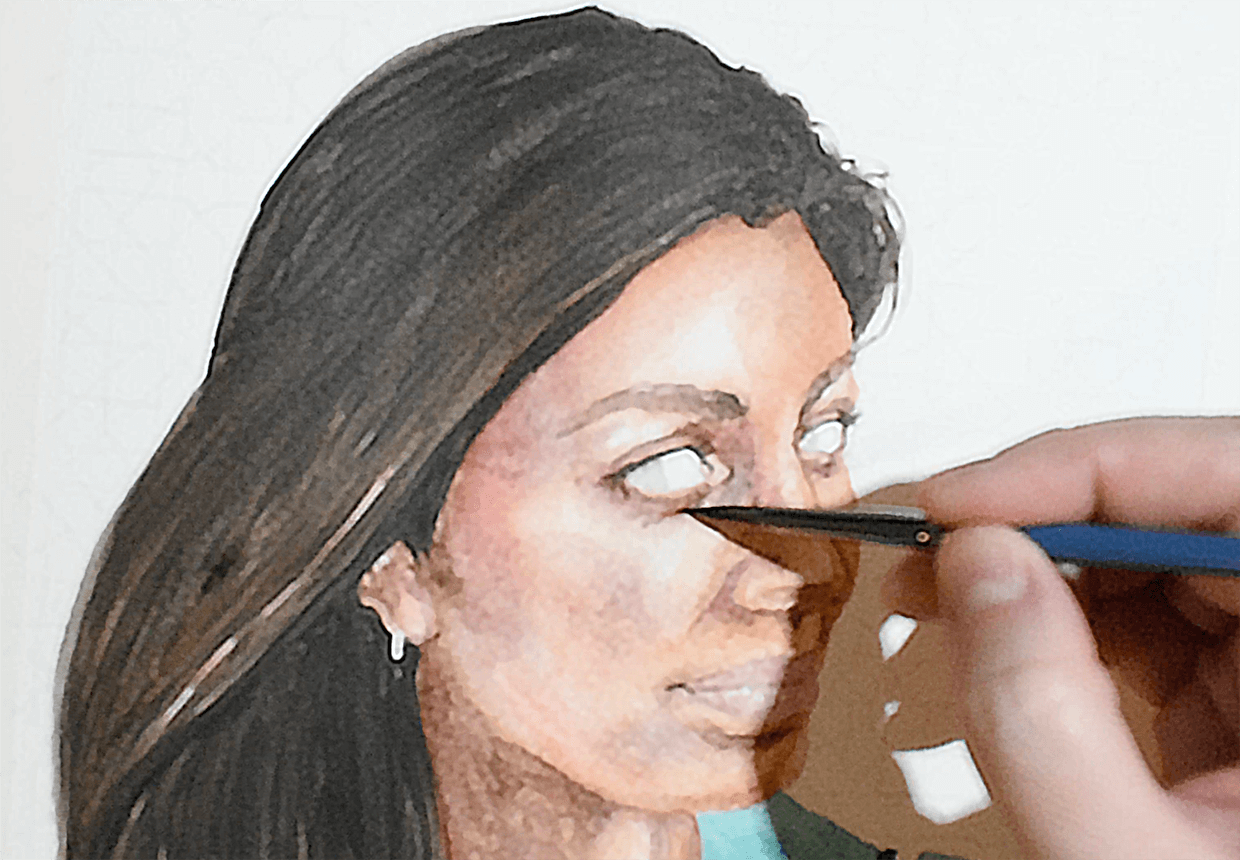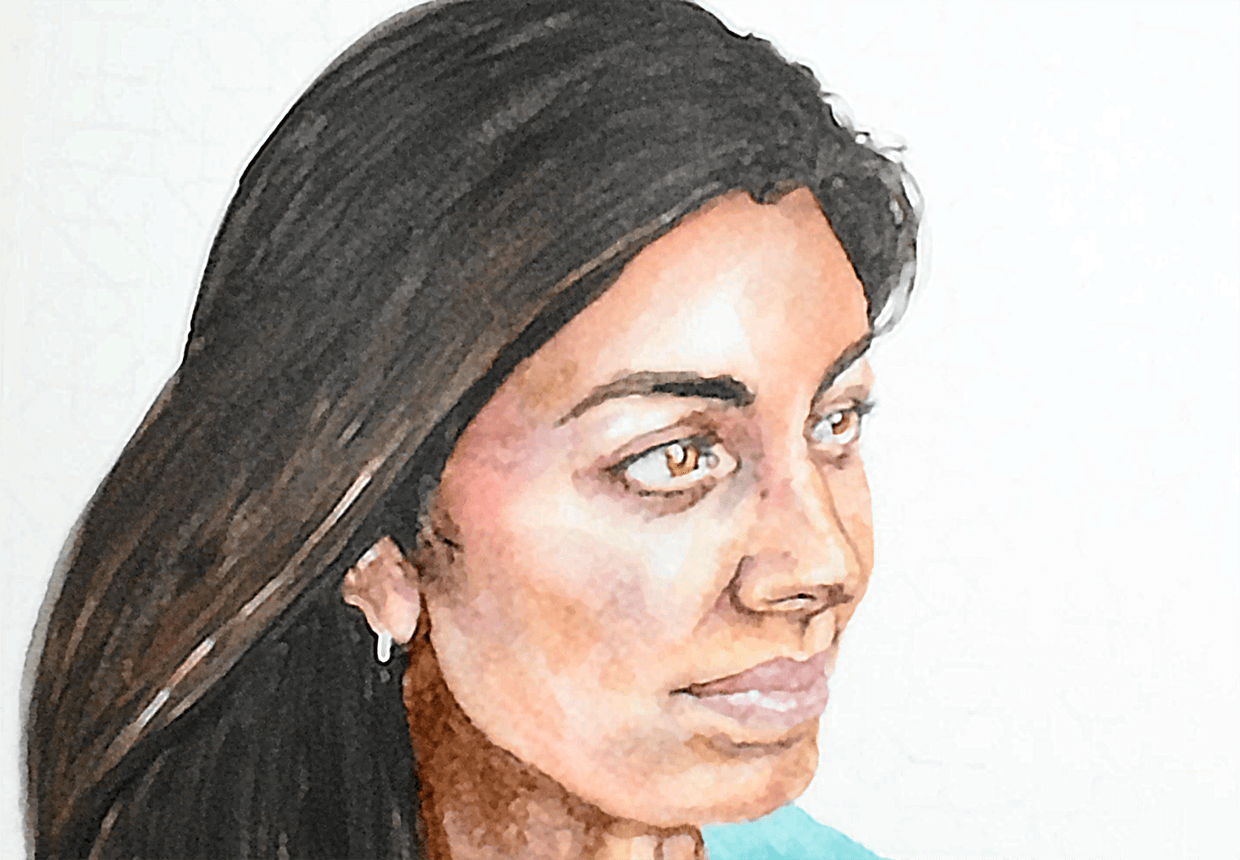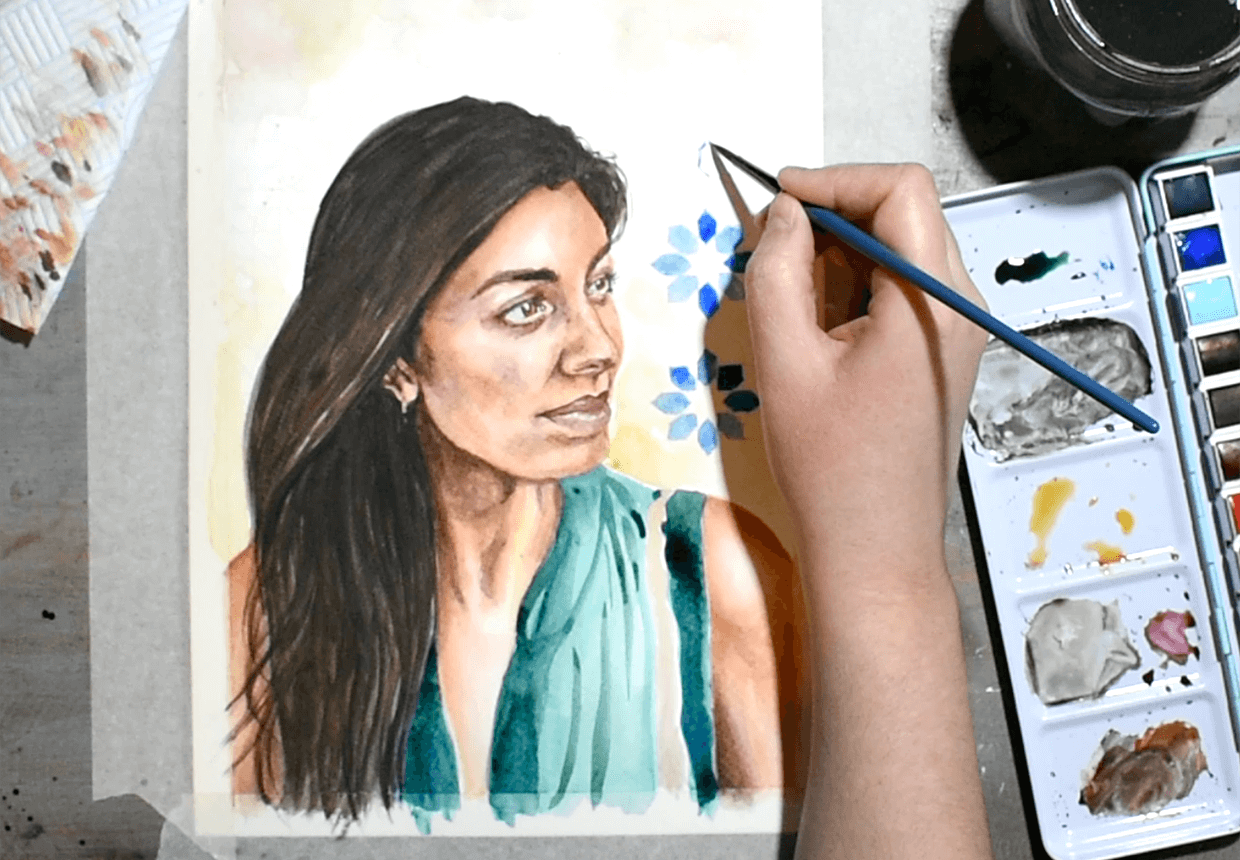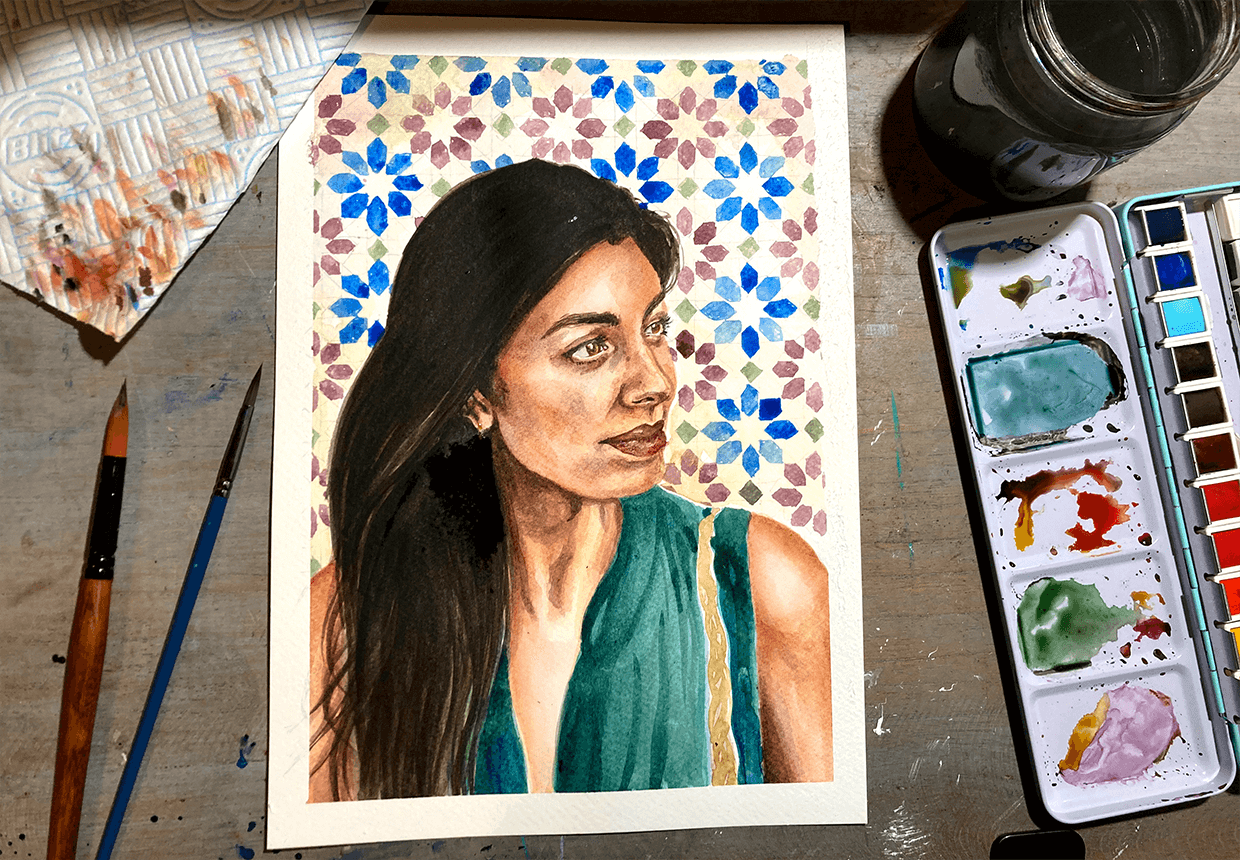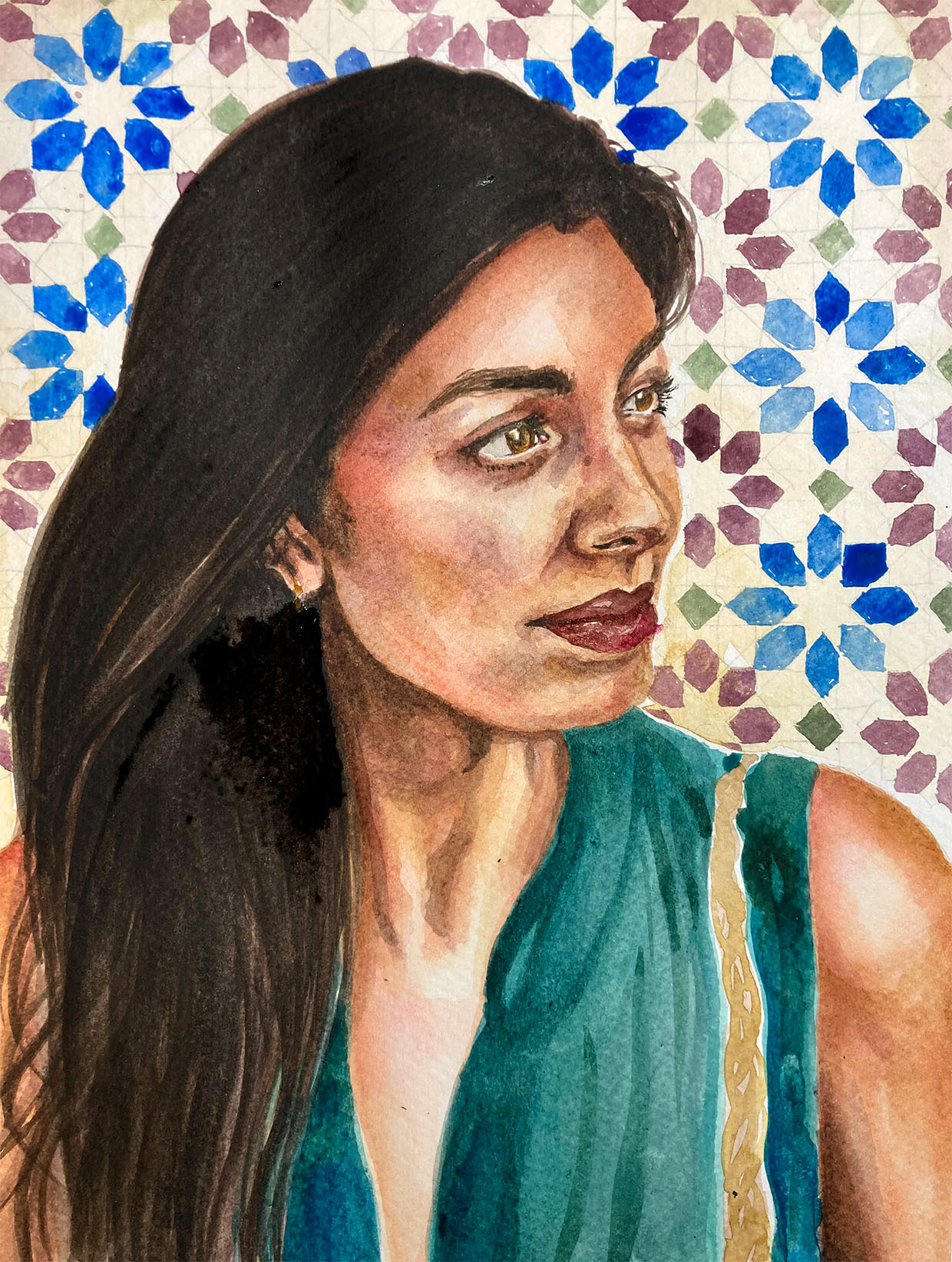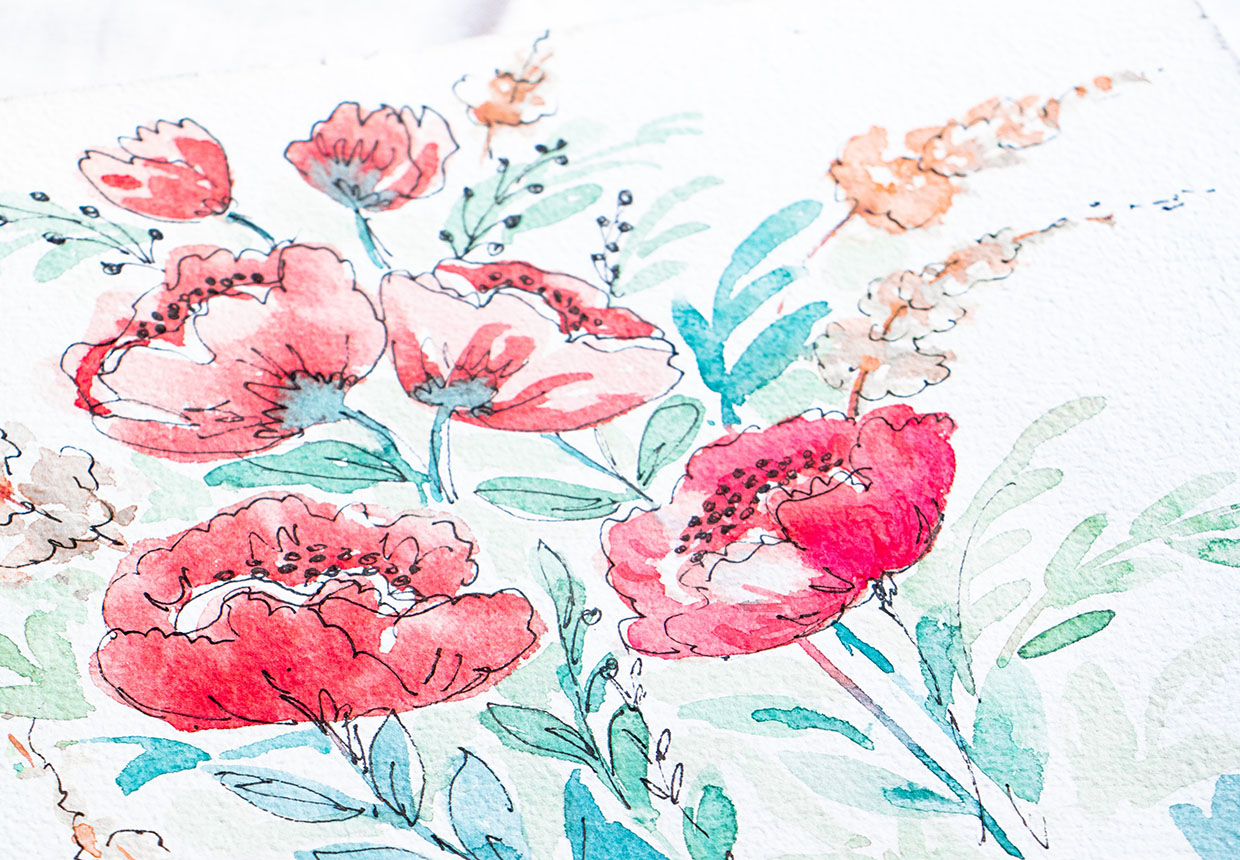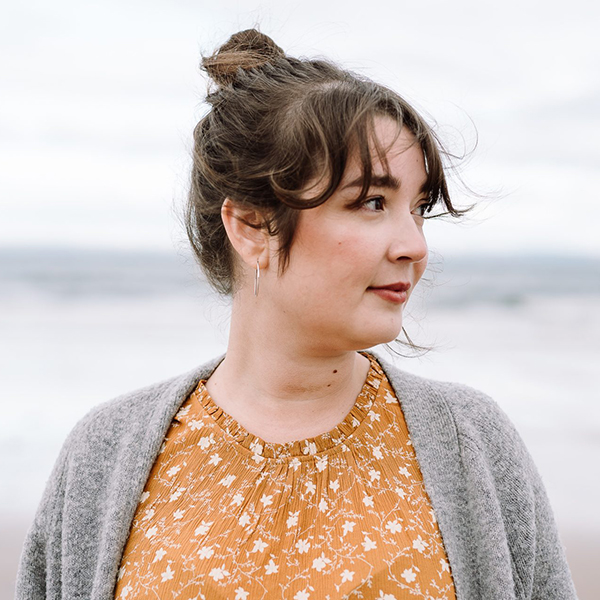A watercolor portrait can be a great way to develop your watercolor painting skills. However, If you’re not sure how to paint a portrait or are new to painting with watercolors, then a watercolor portrait can seem daunting.
Painting skin tones, hair, and detailed facial features all require different techniques to render them accurately. But breaking it down into smaller steps can make it easier to see how it’s done, and that’s exactly what I’ll be doing in this watercolor portrait tutorial.
I’ll run through some tips that will make it simple to paint a watercolor portrait, then will list out all the materials you’ll need to get started. I’ll also talk you through everything from choosing a reference photo to layer paints to get a realistic skin tone, to painting the details of someone’s face.
I’ve been painting portraits for more than a decade, but I never get tired of capturing faces on paper. I paint in a variety of different mediums, but I like watercolors for the subtle color variations you can develop by layering different colors into skin tones.
Watercolors are also great for combining a more realistic portrait with a stylised background, providing an easy and interesting way of giving your portrait a ‘painterly’ look.
Tips and techniques to make watercolor portrait painting easier
In my experience, there are a few things you can do to make watercolor portrait painting easier:
- Paint in light layers. It’s tempting to put loads of color down on paper right away, but using lots of lighter layers makes it easier to correct a mistake and to build up more smoother skin tones.
- Wait for layers to dry properly. Patience is a virtue when it comes to watercolor portrait painting – if you don’t wait for each layer to dry before starting on the next, your layers will muddy and blur into one another.
- Use different brush sizes. You’ll want a bigger brush to cover larger areas quickly, and a smaller brush to paint in fine details.
- Keep one clean brush for blending. A clean, damp brush can help smooth out harsh lines, or be used to “pull” paint across the paper.
- Keep paper towels to hand. A paper towel is essential for making sure your brushes aren’t too wet, and for quickly fixing any minor mistakes.
Materials you'll need for your watercolor portrait
To create your own watercolor portrait, first of all – you guessed it – you’ll need some watercolor paints. I mostly use the Winsor and Newton Professional Watercolour tubes, as I find they dry to really bright, saturated colors. If you’re intending to sell your original artwork, then professional-grade paints are also important because the paint won’t fade over time.
If you’re just getting started, paint as a hobby, or plan to turn your painting into digital art to sell as prints, then a cheaper set can look just as good. I like the Winsor and Newton Cotman range. For this painting, I used a set from an Artful subscription box.
It’s also really important to use paper designed for watercolors. Thinner papers won’t be able to absorb the paint, so you’ll end up with crinkled paper that disintegrates as you paint more layers onto it. Most recently, I’ve been using the Cass Art own-brand paper.
I’m not fussy about the brushes I use, but I find that a tip that tapers to a fine point works well for the detail needed for watercolor portrait painting. It’s good to have at least a few different sizes – I swap between these as I paint.
Finally, it’s helpful to have some masking tape on hand to fix your paper to a desk or board. If you don’t have any, washi tape works almost as well.
Watercolor paints
Here are some recommended watercolor paint sets to buy…
Watercolor paper
Watercolor brushes
Want to stock up on art supplies? Check out our guides to the best watercolor paints, best acrylic paints or buy the best drawing tablet for beginners.
